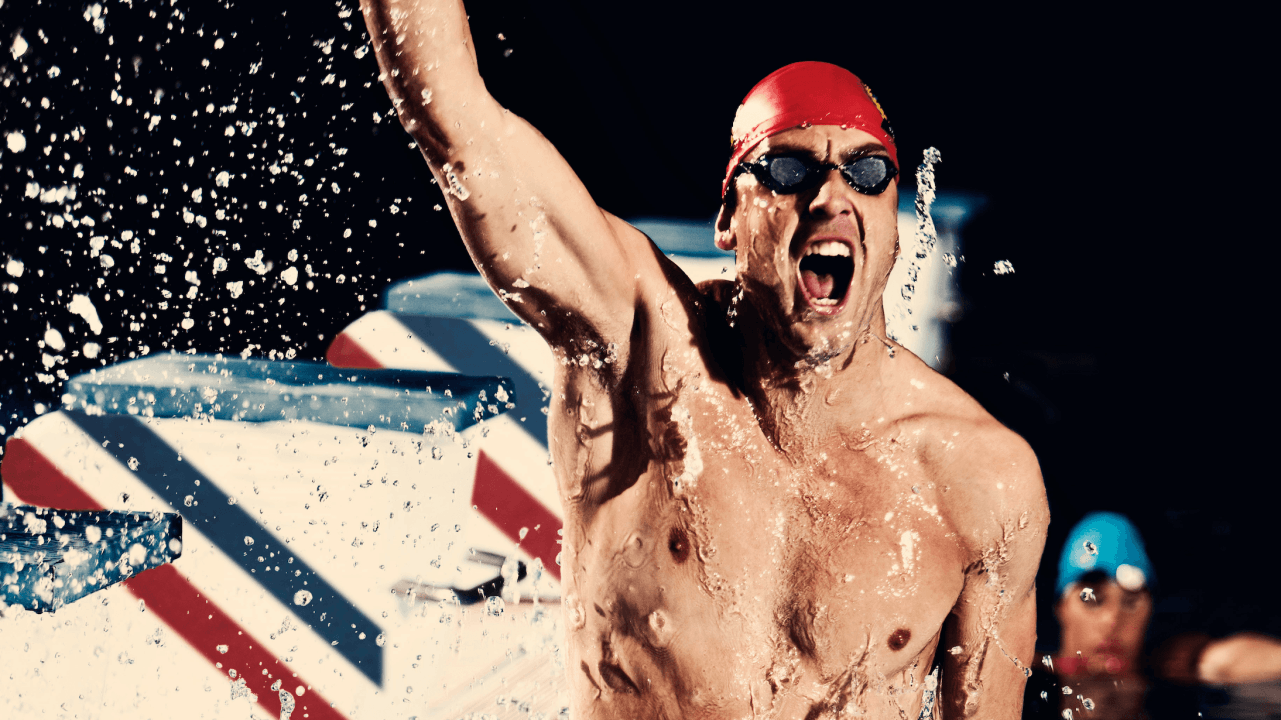Courtesy of SwimSpray
What does it mean to dominate a competition? Not just winning the competition. But winning by a lot.
By how much did the winner win? Was it a close race? Or was it a blowout? Here people often look at the margin of victory — the difference (in score or time) between the winner and the loser.
That absolute difference only makes sense when put into context: Winning by 1 second is much more meaningful in a 30 second race than in a 15 minute race; Winning by 50 points in a dual meet is much more significant than winning by 50 points in a championship meet.
DOMINANCE IN SCORED CONTESTS
In scored contests, we can get a feeling for how dominant a win is by dividing the difference in score by the Loser’s Score, according to this formula:
(Winner’s Score — Loser’s Score) divided by (Loser’s Score).
You can multiply this by 100 to convert to a percentage.
For example, this year the Mens’ Princeton University Competitive Swimming and Diving Team defeated Harvard in duel meet competition by a score of 224.5 to 126.5. They won by a 98 point margin. But how significant was that 98 point win?
We can put this 98 point margin of victory into context by dividing 98/126.5 to get 0.774. Multiply by 100 to get 77.4 percent. Princeton beat Harvard by 77.4% of the points that Harvard scored. That’s a very dominant win. Princeton scored 77.4% more points than Harvard.
DOMINANCE IN TIMED SWIMMING RACES
In timed swimming races, the dominance of a win can be determined by using the following formula:
(Time of Second Place — Time of First Place) divided by (Time of First Place)
Of course, you multiply this by 100 to get the winner’s percent victory. This gives us the winner’s lead over the runner up.
For example, when Michael Phelps won the 100 butterfly with a time of 50.58 at the 2008 Summer Olympics by 0.01 over Serbia’s Milorad Čavić, he beat Čavić by 0.01977% (You get that answer by dividing 0.01 by 50.58 then multiplying the answer by 100 to get the percentage). This tiny percent victory shows how close the race was — not one-sided or dominant– but very evenly matched.
FUTURE RESEARCH REGARDING MARGINS OF VICTORY IN SWIMMING.
Thinking about the percent margin of victory raises some interesting questions. Here are a few of them:
What’s the greatest percent margin of victory in Olympic history?
What’s the narrowest percent margin of victory in Olympic history?
Are certain events typically won by larger or smaller percent margins of victory?
Why are distance events seemingly won by larger percent margins of victory?
Do certain swimmers dominate their events by more than others?
Do some swimmers win more close races than they lose?
SWIMSPRAY DOMINATES THE COMPETITION.
In the case of anti-chlorine products, SwimSpray can also express it’s superior efficacy as a percent margin of victory over the competition. SwimSpray actually has a pretty massive percent margin of victory over its closest anti-chlorine competitor. Following the similar calculations described above, SwimSpray’s dominance over the runner up anti-chlorine product would be 96.5%. That’s pretty dominant.
Swimming content is courtesy of SwimSpray, a SwimSwam partner.

